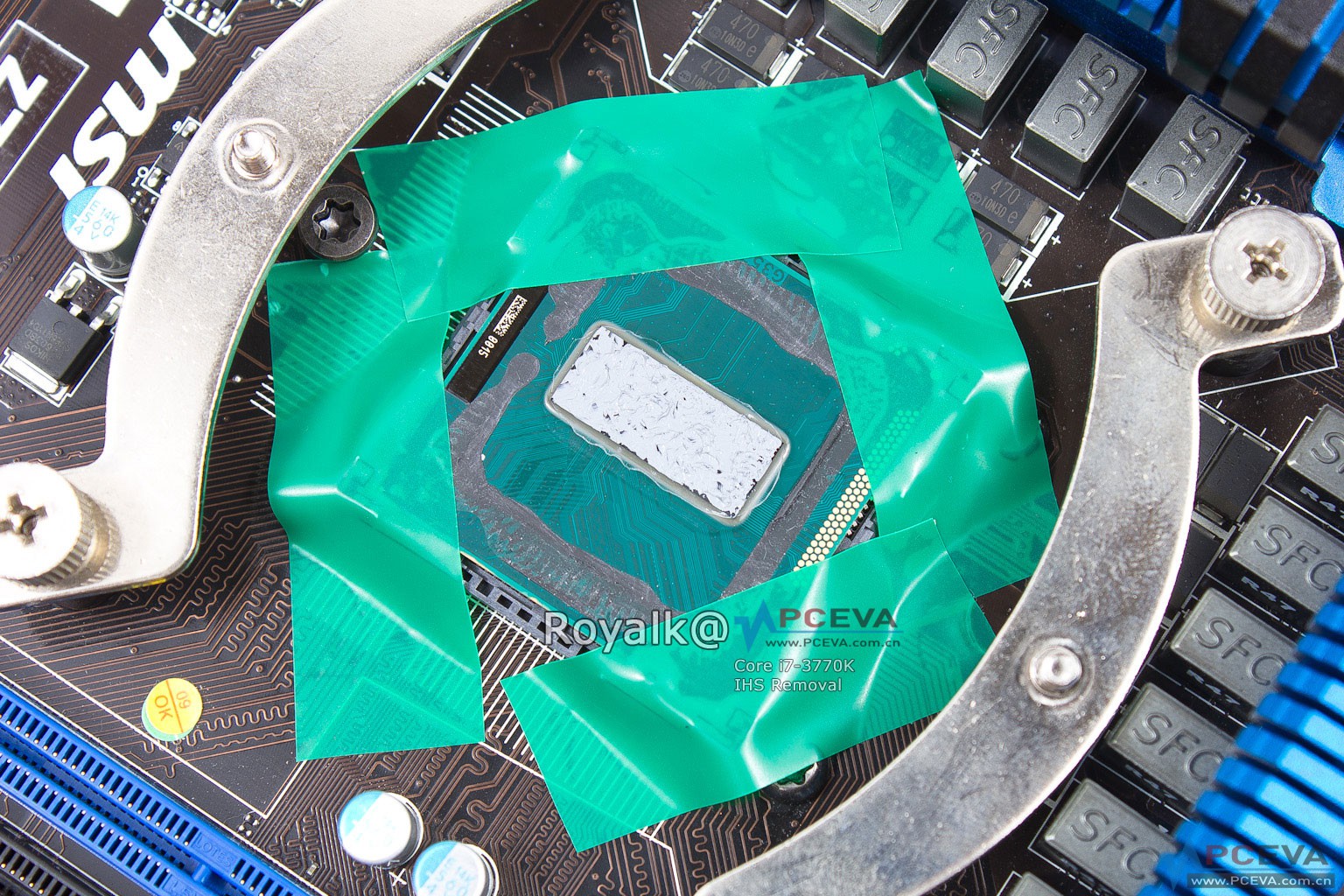- Jul 26, 2011
- 8,548
- 2
- 0
http://www.overclock.net/t/1249419/pcevaluation-intel-i7-3770k-temperature-measured-without-ihs

The results? No difference, IHS removal did not help. High temps are caused by the tightly packed cores.
This incident has ignited two days culprit IVB loaded with hot, foreign websites overclockers.com full of curiosity to open the top cover of the IVB (IHS) and found the inside top cover and the core is connected to the grease, but not before usedthe materials used in soldering process (tin, and other low melting point metal), which is obviously the practices of Intel in order to save costs, because the behavior of the past, Intel in the use of silicone grease on the low-end CPU has always existed, but this time not even 3770K is no exception. In any case, the heat capacity of the metal is more than 10 times of the grease, that way we all agreed that the culprit leading to IVB high temperature is grease, but in theory seems to make sense.
As early as the time of the K8, I have opened a few CPU cover, from time experience tells me openings after cooling is not obvious, at most, 2-3 cooling. Therefore, skeptical, and I intend to put the Fengyun 3770K roof of my hands open, to see how changes in temperature after opening, the culprit that caused the high temperature is not the grease pit father.
Note: The following behavior is very dangerous, first of all to make your CPU lose the warranty if the injury core followed by a little attention, will make your CPU expired, so we can be spectators, not to emulate! I is irresponsible for any problems caused by the CPU top cover is open!
Test platform:
CPU:Intel Core i7-3770K
Memory: PCEVA Extreme Kit DDR3-2133 7-10-7
Motherboard: MSI Z77A-GD65
Video card: MSI R6570 MD1GD3
Hard drives: Plextor PX-128M2P
Power supply: Enermax Revolution 85+1050W
Radiators: Noctua NH-D14
Room temperature: 28 ° c
Grease: Prolimatech PK-1 (10.2/mK)

The results? No difference, IHS removal did not help. High temps are caused by the tightly packed cores.
Last edited:





